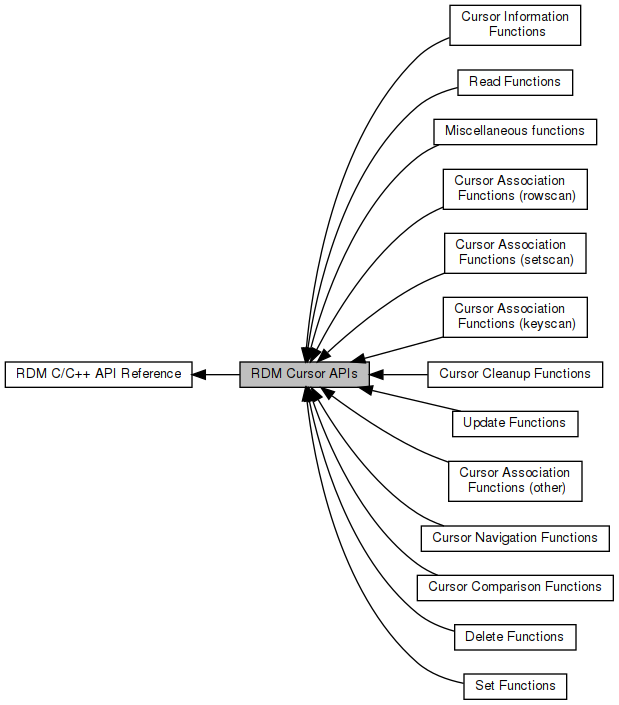
|
Detailed Description
The core database API for handling and navigating data. All the functions here are located in RDM DB Engine Library. Linker option:
-lrdmrdmA cursor represent a set of rows from a table ordered by certain criteria. Except where we have set relationships (Set Functions) or the special cursor returned by rdm_rdmGetBeforeFirst() or rdm_rdmGetAfterLast() a cursor always represent all rows for a given table.
When a cursor is associated with a set of rows, the cursor will be positioned at the BeforeFirst position or where applicable it will be positioned at a given row or position. Use Cursor Navigation Functions to navigate forward, backward, or to a given position. A position can be at any row in the set, between rows, or the BeforeFirst or AfterLast positions. Use Cursor Comparison Functions to comapre the position of two cursors.
The simplest cursors are singletons returned by rdm_rdmGetBeforeFirst(), rdm_rdmGetAfterLast(), rdm_cursorGetSelf(), rdm_cursorGetOwnerRow(). All other cursors are associated with zero or more rows from a given table.